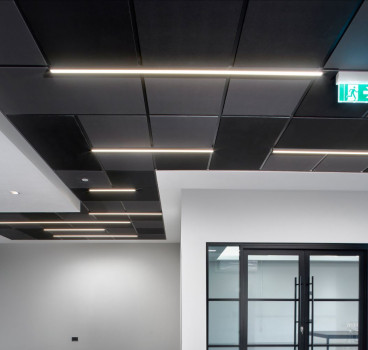Lessons from building on the ISS - construction in zero gravity
The International Space Station (ISS) is a marvel of engineering. Orbiting hundreds of kilometres above Earth, it's a testament to human ingenuity and our ability to construct complex structures in the most challenging of environments. But beyond its role as a research platform, the ISS also offers invaluable lessons for construction and engineering here on Earth, particularly in hostile environments, writes John Ridgeway.
The ISS presents a set of challenges that are almost alien to terrestrial construction. For a start, the absence of gravity affects everything from the way materials behave to the way structures are assembled. The ISS also endures drastic temperature swings, from scorching sunlight to the frigid cold of space.
On a more practical note, the lack of atmosphere means materials cannot be joined using conventional methods like welding. Furthermore, construction materials and astronauts alike must be shielded from harmful solar and cosmic radiation.
In addition, every component, tool and drop of water must be transported from Earth, making resource management critical. Construction and maintenance also involve astronauts working in bulky spacesuits or robotic arms controlled from afar.
However, there has been a massive bonus. These challenges have forced engineers to develop innovative solutions, such as modular construction, that are now finding applications in extreme environments on our own planet.
Lessons from space
The ISS was built in stages, with modules constructed on Earth and then assembled in orbit. This modular approach was essential to minimise the complexity of on-site construction in space.
As a result, modular construction is increasingly used in terrestrial projects, especially in challenging locations. Buildings and infrastructure can now be prefabricated in controlled factory settings and then transported to remote Arctic locations, for example, reducing the need for extensive on-site construction in harsh conditions.

Underwater habitats can be assembled on the surface and then lowered into place, minimising the risks and complexities of underwater construction. Modular structures can also be rapidly deployed to disaster zones to provide temporary housing, hospitals and other essential facilities.
All this means faster construction times, improved quality control, reduced waste, minimal environmental impact and increased safety in hazardous environments.
The ISS also relies on advanced materials that are lightweight, strong and resistant to extreme temperatures and radiation. Examples include high-strength alloys, composites and specialised coatings. These materials are finding their way into terrestrial construction.
Lightweight composites are now being used to reduce the weight of structures, allowing for taller and more slender design. High-strength alloys and composites offer improved durability and corrosion resistance in bridges exposed to harsh weather conditions. Specialised coatings protect pipelines from corrosion in extreme environments like offshore oil fields and Arctic regions.
All these benefits are helping to deliver increased structural performance, improved durability and longevity, reduced maintenance costs and enhanced energy efficiency
Robotics and automation
Robots play a crucial role in the construction and maintenance of the ISS. The Canadarm2, for example, is used to move modules, deploy equipment and perform inspections. This experience means that robotics and automation are also revolutionising terrestrial construction.
Another example is 3D printing, which is being used to construct entire buildings, reducing labour costs and construction time. Self-driving bulldozers, excavators and other construction vehicles that can improve efficiency and safety on construction sites are also the result of our experience in space. And we must not forget drones and robots, which are used to inspect bridges, pipelines and other infrastructure in hazardous or hard-to-reach locations.
All this has resulted in increased efficiency and productivity, improved safety, reduced labour costs and greater precision and accuracy, but there is much more. The ISS has sophisticated systems for recycling air and water, minimising the need for resupply from Earth.
These principles are being applied to buildings which are being designed with closed-loop systems for water and waste management, reducing their environmental impact. Communities in remote or isolated locations are also using closed-loop systems to become self-sufficient. Furthermore, portable closed-loop systems can provide clean water and sanitation in disaster zones.
Virtual and augmented reality
Astronauts use virtual and augmented reality (VR/AR) for training, mission planning and remote operation of equipment and VR/AR is also transforming terrestrial construction. VR allows architects and engineers to visualise designs in 3D, improving communication and collaboration. In addition, AR can be used to overlay digital information onto the real-world construction site, improving accuracy and efficiency.
VR/AR further enables experts to collaborate remotely on construction projects, reducing the need for travel and improving decision-making. This has led to improved design and communication, increased efficiency and accuracy, enhanced safety and reduced costs
All this means that as we continue to explore space and push the boundaries of engineering, the lessons we learn will have a profound impact on how we build on Earth. The technologies and techniques developed for the ISS are not just for astronauts - they are for anyone who dares to build in challenging environments.
In the future, we can expect to see even greater integration of space-derived technologies in terrestrial construction. These include materials that can repair themselves, inspired by research into how materials degrade in space. This will become more common, increasing the lifespan of structures.
Robots and AI will also play an increasingly large role in construction, building structures with minimal human intervention in dangerous or remote locations. Closed-loop life support systems and advanced materials will further enable the creation of self-sufficient and sustainable habitats in even the most hostile environments on Earth and beyond.
The construction industry is on the cusp of a revolution, driven by the need to build more efficiently, sustainably, and resiliently. By looking to the lessons of the ISS, we can unlock new possibilities and create a future where we can build anywhere, from the depths of the ocean to the vastness of space.
Additional Blogs

When fire breaks out who really knows the system
The story that caught my attention recently wasn’t about fire growth or building loss, it was about confusion. Specifically, the confusion faced by the fire service when arriving at buildings...
Read moreThe design and development of Nexus Layouts
When Zentia set out to rethink the suspended ceiling, the brief was clear: deliver greater creative freedom for designers, more distinctive visual identity for clients, and a solution that could keep...
Read more

The 100-year construction project or why longevity Is the new sustainability
For decades, the construction sector has defined sustainability through metrics such as operational energy, embodied carbon, material efficiency and circularity. These measures remain vital, but a...
Read more